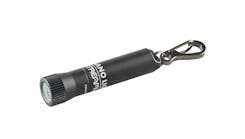It’s hard to believe that it’s already been 10 years since PTEN published its first Aftermarket Profile. For those who don’t know what that is, check it out here. These are the results of our yearly purchasing study. We gathered data from shop owners and technicians across the country, asking questions about the types of repairs and services you perform, the tools and equipment you own, your current and future purchasing plans, and much more.
In honor of the Aftermarket Profile’s tenth anniversary, I’d like to take a look back and see how much this industry has grown.
Tools and equipment
Perhaps unsurprisingly, hand tools have remained the number one tool purchase over the past ten years. Along with the hand tools, specialty tools, electrical tools, and chemicals have also remained consistent. Until 2020, diagnostic tools also held a position in the top five categories of tools and equipment being purchased, then cordless power tools took their place.
Though the cordless power tools jumped up to the top five, air tools have not been forgotten. Over the past five years, when we’ve asked the question, “Do you prefer air tools or cordless tools,” the responses have remained pretty similar — about 20 percent prefer air tools, 50 percent prefer cordless tools, and 30 percent have no preference. If you want to learn more about the future of air tools, check out our inaugural Toolbox Topics video with Aircat Pneumatic.
Technology
The automotive industry has seen quite the technology boom over the past ten years. It’s almost funny looking back to 2016 and seeing the low percentage of technicians that have had to use a tool that requires a smart device — only 23 percent — and compare it to this year’s stat of 64 percent.
We’ve also watched the rise of start/stop technology — in 2016, 51 percent of shops had never seen it and now, 22 percent of shops see it daily. Similarly, in 2016, only 30 percent of shops owned a smart battery charger. Fast forward to 2025 and 59% of shops own one. Additionally, as the technology has changed, so has the industry’s training needs. Though electrical/electronic systems and engine performance/driveability have remained in the top three categories noted as “the biggest training opportunities,” hybrid/electric vehicles and ADAS have also been major contenders.
I could go on about all these stats for a while, so if you want to chat more about the changes we’ve seen in the industry over the years, shoot me a message!



